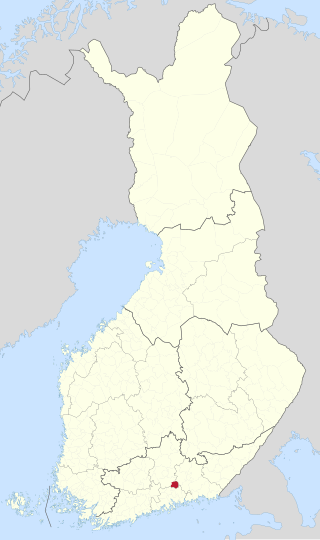
Artjärvi is a former municipality of Finland. It was consolidated with the town of Orimattila on January 1, 2011.

Kestilä is a village and former municipality of Finland. It is located in the province of Oulu and is part of the Northern Ostrobothnia region.

Taivalkoski is a municipality of Finland, it is located in the Province of Oulu and is part of the Northern Ostrobothnia region.

Liminka is a municipality in the Northern Ostrobothnia region in Finland. Liminka is located about 25 kilometres (16 mi) south of Oulu.

Karstula is a municipality of Finland founded in 1867. It is located in the Central Finland region. The municipality has a population of 3,623 and covers an area of 963.19 square kilometres (371.89 sq mi) of which 76.22 km2 (29.43 sq mi) is water. The population density is 4.08 inhabitants per square kilometre (10.6/sq mi).

Isokyrö is a municipality of Finland. It is located in the South Ostrobothnia region, 43 kilometres (27 mi) from Vaasa. The municipality has a population of 4,356 and covers an area of 356.91 square kilometres (137.80 sq mi) of which 2.79 km2 (1.08 sq mi) is water. The population density is 12.3 inhabitants per square kilometre (32/sq mi).
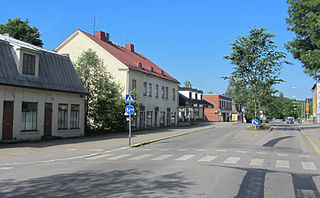
Karkkila is a town and a municipality of Finland.
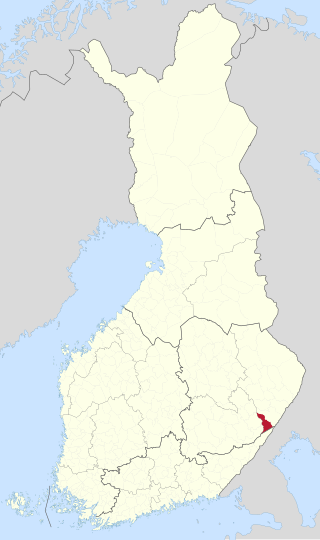
Kesälahti is a former municipality of Finland. It was consolidated with Kitee on 1 January 2013.

Keuruu is a town and municipality of Finland. It is located in the province of Western Finland and is part of the Central Finland region. The municipality has a population of 9,176 and covers an area of 1,430.57 square kilometres (552.35 sq mi) of which 172.4 km2 (66.6 sq mi) is water. The population density is 7.29 inhabitants per square kilometre (18.9/sq mi). The town center and Haapamäki village are both the most populated places in Keuruu.

Korsnäs is a municipality of Finland. It is located in the Ostrobothnia region.

Piippola is a village and a former municipality of Finland.

Pornainen is a small municipality of Finland. It is located in the province of Southern Finland and is part of the Uusimaa region. The neighboring municipalities are Askola in the east, Mäntsälä in the north, Porvoo in the southeast and Sipoo in the southwest. It is located 18 kilometres (11 mi) east of the town of Järvenpää.

Pyhäntä is a municipality of Finland. It is located in the Northern Ostrobothnia region. The municipality has a population of 1,647 (30 September 2023) and covers an area of 847.48 square kilometres (327.21 sq mi) of which 36.72 km2 (14.18 sq mi) is water. The population density is 2.03 inhabitants per square kilometre (5.3/sq mi). The municipality is unilingually Finnish.
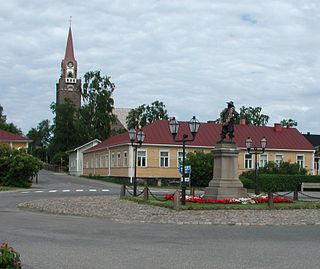
Raahe is a town and municipality of Finland. Founded by Swedish statesman and Governor General of Finland Count Per Brahe the Younger in 1649, it is one of 10 historic wooden towns remaining in Finland. Examples of other Finnish historic wooden towns are Kaskinen (Kaskö), Old Rauma, Porvoo (Borgå), Jakobstad (Pietarsaari), and Vaasa (Vasa). After a devastating fire in 1810, Raahe was rebuilt adhering to new design principles which minimized the risk of fire and enlarged some civic spaces. Old Raahe is noted for its Renaissance-inspired rectilinear town plan featuring an unusual central-square with closed corners.

Rantsila is a village and former municipality of Finland.

Viitasaari is a town and municipality of Finland.

Ylikiiminki is a former municipality of Finland. It was consolidated with the city of Oulu on 1 January 2009.
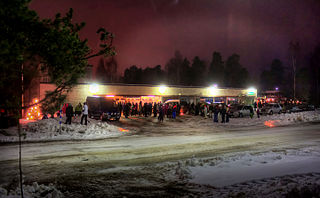
Ylämaa is a former municipality of Finland, located in the province of Southern Finland as part of the South Karelia region. It was consolidated with Lappeenranta on January 1, 2010.
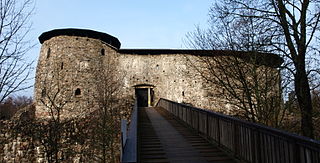
Raseborg is a town and municipality of Finland. It was created on January 1, 2009, when the municipalities of Ekenäs, Karis and Pohja were consolidated into a single town, creating the largest Swedish-speaking-majority city of Finland in terms of population. Of these, Ekenäs now serves as the administrative center of Raseborg. The name of the new town is based on the Raseborg Castle located in Ekenäs, or formerly in the municipality of Snappertuna. Historically the name of the county was also Raseborg in the 14th century.

Siikalatva is a geographical area and a municipality of Finland. It lies 90 kilometres to the south of the city of Oulu and belongs to the North Ostrobothnia region.






















